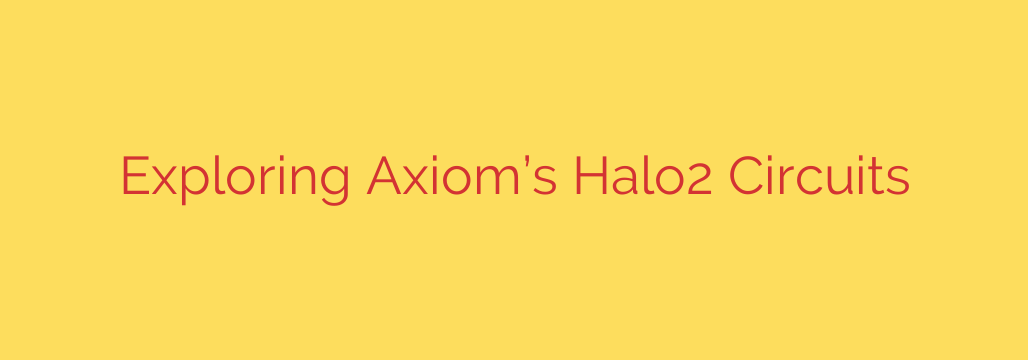
Zero-knowledge proofs are transforming the capabilities of blockchain technology, enabling developers to build more complex and efficient applications. One significant area of innovation is making vast amounts of historical on-chain data accessible and verifiable for smart contracts. Traditionally, smart contracts are limited in the amount of historical data they can directly access due to gas costs and block size limitations. This is where platforms like Axiom come into play, leveraging advanced zero-knowledge proof systems like Halo2 to overcome these challenges.
Axiom is designed to allow Ethereum smart contracts to query and verify arbitrary historical on-chain data. Instead of performing expensive lookups directly on-chain, Axiom enables the computation of this historical data off-chain. A zero-knowledge proof is then generated to cryptographically attest to the correctness of this off-chain computation. This proof is compact and can be efficiently verified on-chain, allowing smart contracts to act upon insights derived from historical data without incurring prohibitively high gas costs.
At the core of Axiom’s architecture is the Halo2 proof system. Halo2 is a state-of-the-art zero-knowledge proof system developed by the Electric Coin Company (ECC). It stands out for several key reasons. Unlike some earlier systems, Halo2 does not require a trusted setup. This eliminates a significant security concern and simplifies the deployment process. Halo2 is also highly efficient, particularly for recursive proofs, where a proof can verify the correctness of another proof. This capability is crucial for scalability and building complex systems.
Using Halo2 provides Axiom with several important advantages. The efficiency of proof generation and verification allows Axiom to process large amounts of historical data and provide proofs that are economical to verify on Ethereum. The absence of a trusted setup makes Axiom more secure and decentralized, aligning with core blockchain principles. Furthermore, Halo2’s architecture is flexible and can be optimized for various types of computations, making it well-suited for the diverse queries Axiom supports.
The process typically involves a user or application requesting historical data via Axiom. Axiom’s off-chain infrastructure fetches the requested data, performs the necessary computations (like summing values, finding specific transactions, etc.), and generates a Halo2 proof of the computation’s correctness. This proof is then sent to an on-chain verifier contract managed by Axiom. The smart contract initiating the query can then call the Axiom verifier contract to check the proof. Once verified, the smart contract can be certain the historical data result is accurate and securely proceed with its logic.
By enabling smart contracts to trustlessly access and utilize historical on-chain data, Axiom, powered by Halo2 circuits, unlocks a wealth of new possibilities. This includes building more sophisticated DeFi protocols that depend on historical price data or user activity, creating advanced on-chain analytics dashboards, developing complex identity and reputation systems based on past behavior, and much more. The ability to access this rich historical context securely and efficiently is a significant leap forward for Ethereum smart contract development. Axiom and its use of Halo2 are making historical data a practical and powerful resource for decentralized applications.
Source: https://blog.trailofbits.com/2025/05/30/a-deep-dive-into-axioms-halo2-circuits/








